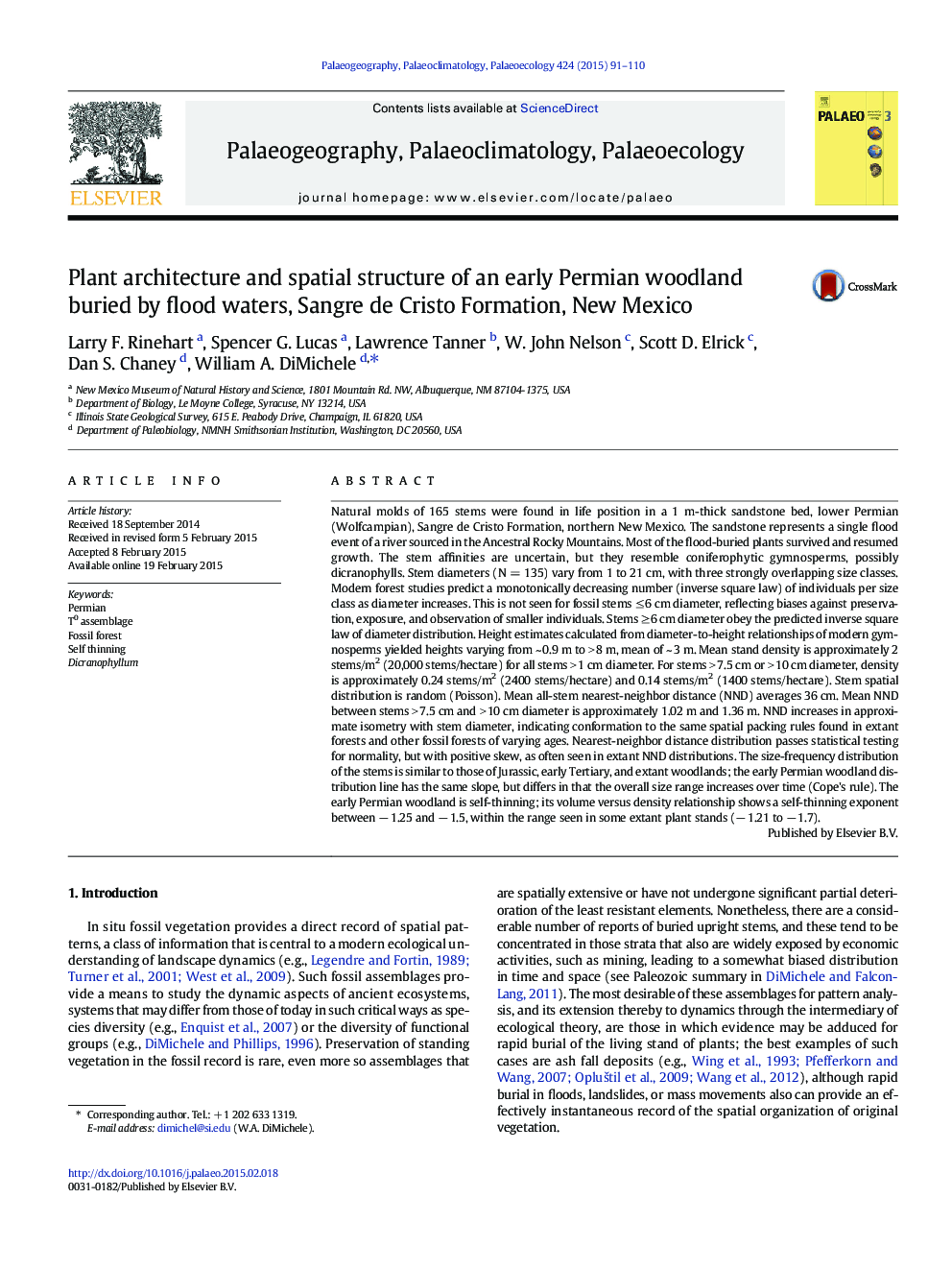| کد مقاله | کد نشریه | سال انتشار | مقاله انگلیسی | نسخه تمام متن |
|---|---|---|---|---|
| 6349760 | 1622166 | 2015 | 20 صفحه PDF | دانلود رایگان |
- Flood-buried, extensive, dense stand of 1-21Â cm diameter early Permian plant stems.
- Seasonally dry environment from which in situ stems are rarely reported.
- Probably coniferophytic gymnosperms.
- Flared base with roots plus adventitious shoots and roots into entombing sand.
- Stand density conforms to self-thinning.
Natural molds of 165 stems were found in life position in a 1 m-thick sandstone bed, lower Permian (Wolfcampian), Sangre de Cristo Formation, northern New Mexico. The sandstone represents a single flood event of a river sourced in the Ancestral Rocky Mountains. Most of the flood-buried plants survived and resumed growth. The stem affinities are uncertain, but they resemble coniferophytic gymnosperms, possibly dicranophylls. Stem diameters (N = 135) vary from 1 to 21 cm, with three strongly overlapping size classes. Modern forest studies predict a monotonically decreasing number (inverse square law) of individuals per size class as diameter increases. This is not seen for fossil stems â¤Â 6 cm diameter, reflecting biases against preservation, exposure, and observation of smaller individuals. Stems â¥Â 6 cm diameter obey the predicted inverse square law of diameter distribution. Height estimates calculated from diameter-to-height relationships of modern gymnosperms yielded heights varying from ~ 0.9 m to > 8 m, mean of ~ 3 m. Mean stand density is approximately 2 stems/m2 (20,000 stems/hectare) for all stems > 1 cm diameter. For stems > 7.5 cm or > 10 cm diameter, density is approximately 0.24 stems/m2 (2400 stems/hectare) and 0.14 stems/m2 (1400 stems/hectare). Stem spatial distribution is random (Poisson). Mean all-stem nearest-neighbor distance (NND) averages 36 cm. Mean NND between stems > 7.5 cm and > 10 cm diameter is approximately 1.02 m and 1.36 m. NND increases in approximate isometry with stem diameter, indicating conformation to the same spatial packing rules found in extant forests and other fossil forests of varying ages. Nearest-neighbor distance distribution passes statistical testing for normality, but with positive skew, as often seen in extant NND distributions. The size-frequency distribution of the stems is similar to those of Jurassic, early Tertiary, and extant woodlands; the early Permian woodland distribution line has the same slope, but differs in that the overall size range increases over time (Cope's rule). The early Permian woodland is self-thinning; its volume versus density relationship shows a self-thinning exponent between â 1.25 and â 1.5, within the range seen in some extant plant stands (â 1.21 to â 1.7).
Journal: Palaeogeography, Palaeoclimatology, Palaeoecology - Volume 424, 15 April 2015, Pages 91-110
